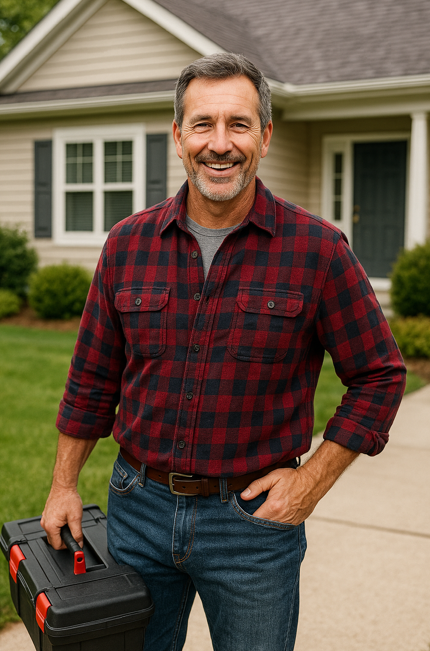Buying the right air conditioner is just the first step. Proper installation and thorough professional checks ensure your system runs efficiently, lasts longer, and keeps your home comfortable year-round.
In this guide, I’ll walk you through the essential steps and expert-level checks needed to install residential packaged AC units—especially those using the modern, eco-friendly R-32 refrigerant. From site prep to final startup tests, these tips come from years on the job and will help you avoid common pitfalls.
Why Proper Installation Is Critical
Today’s packaged air conditioners are sophisticated machines engineered for maximum efficiency and reliability. Skipping or rushing installation steps can lead to:
-
Wasted energy and higher bills
-
Increased risk of breakdowns and expensive repairs
-
Uneven cooling and indoor discomfort
-
Potential safety hazards, especially when handling refrigerants like R-32
Proper setup protects your investment and ensures peak performance from day one.
Step 1: Pre-Installation Planning
Before you install a single screw, plan carefully.
Choosing the Right Location
-
The unit needs good airflow — avoid cramped spaces or locations directly exposed to harsh sunlight or debris.
-
Ensure there’s enough clearance for service access and ventilation as per manufacturer guidelines.
-
Install on a level, solid surface to reduce vibration and noise.
Electrical Preparation
-
Verify that your home’s electrical panel supports the unit’s voltage and amperage requirements.
-
Use appropriate breakers, disconnects, and wiring rated for the job.
-
Follow local codes and the National Electrical Code (NEC) for safety and compliance.
Step 2: Inspect Before You Install
When the unit arrives, don’t rush to install.
-
Check for shipping damage like dents or loose components.
-
Confirm the model and specifications match your order and the needs of your home.
Step 3: Correct Unit Placement
-
Set the unit level on the pad or mounting surface.
-
Secure it firmly with the recommended hardware.
-
Use vibration pads if specified to reduce noise and mechanical wear.
Step 4: Refrigerant Handling & Charging
R-32 refrigerant offers excellent efficiency and a lower environmental impact but demands careful handling due to its mild flammability.
-
Only certified technicians trained in handling A2L refrigerants should charge the system.
-
Accurately weigh refrigerant into the system using proper tools — never guess or overcharge.
-
Leak-test all connections before finalizing the charge.
Learn more about safe refrigerant handling from ASHRAE’s guidelines on A2L refrigerants.
Step 5: Electrical Connections
-
Match wiring exactly to the unit’s wiring diagram.
-
Ensure proper grounding and secure connections.
-
Double-check thermostat wiring for accuracy.
For electrical safety, follow standards outlined by OSHA and always de-energize circuits before work.
Step 6: Ductwork and Airflow Setup
Airflow is key to performance:
-
Connect supply and return ducts tightly with no leaks.
-
Make sure ducts are properly sized and insulated to minimize energy loss.
-
Balance airflow for consistent temperature throughout your home.
Check out CED Engineering’s duct sizing guidelines for expert advice on duct design.
Step 7: Startup & Professional Checks
Before handing over the system, complete these crucial checks:
-
Electrical Measurements: Verify voltage and current on compressor and fans meet specs.
-
Refrigerant Conditions: Measure superheat and subcooling to ensure correct refrigerant charge.
-
Thermostat Operation: Confirm proper temperature reading and system control.
-
Noise & Vibration: Listen for abnormal sounds or excessive shaking.
-
Drainage: Ensure condensate drains properly to prevent water damage or mold.
Step 8: Educate the Homeowner
After installation, walk the homeowner through:
-
Basic operation and thermostat use
-
Filter maintenance and replacement schedules
-
Signs of system trouble and when to call a technician
Good communication reduces callbacks and boosts customer satisfaction.
Why R-32 Packaged Units Are a Smart Choice
Modern R-32 packaged air conditioners combine high efficiency, reduced environmental impact, and compatibility with evolving HVAC regulations. They’re an excellent option for residential cooling needs.
If you’re shopping for a quality R-32 packaged system, I recommend checking out the selection at The Furnace Outlet’s R-32 Residential Packaged Air Conditioners collection. They offer a great range of units that meet today’s efficiency standards.
Troubleshooting Common Installation Issues
Even pros can run into:
-
Refrigerant leaks — use electronic detectors or UV dye to find them.
-
Airflow problems — caused by duct leaks or undersized ducts.
-
Electrical faults — often loose wiring or defective components.
-
Thermostat glitches — wiring errors or sensor placement issues.
Final Thoughts
Installation quality can make or break your packaged air conditioner’s performance. Follow these steps carefully, and you’ll enjoy efficient, reliable cooling for years to come.
If you’re considering a new R-32 packaged unit, thorough installation paired with professional-level checks will maximize your comfort and savings.







